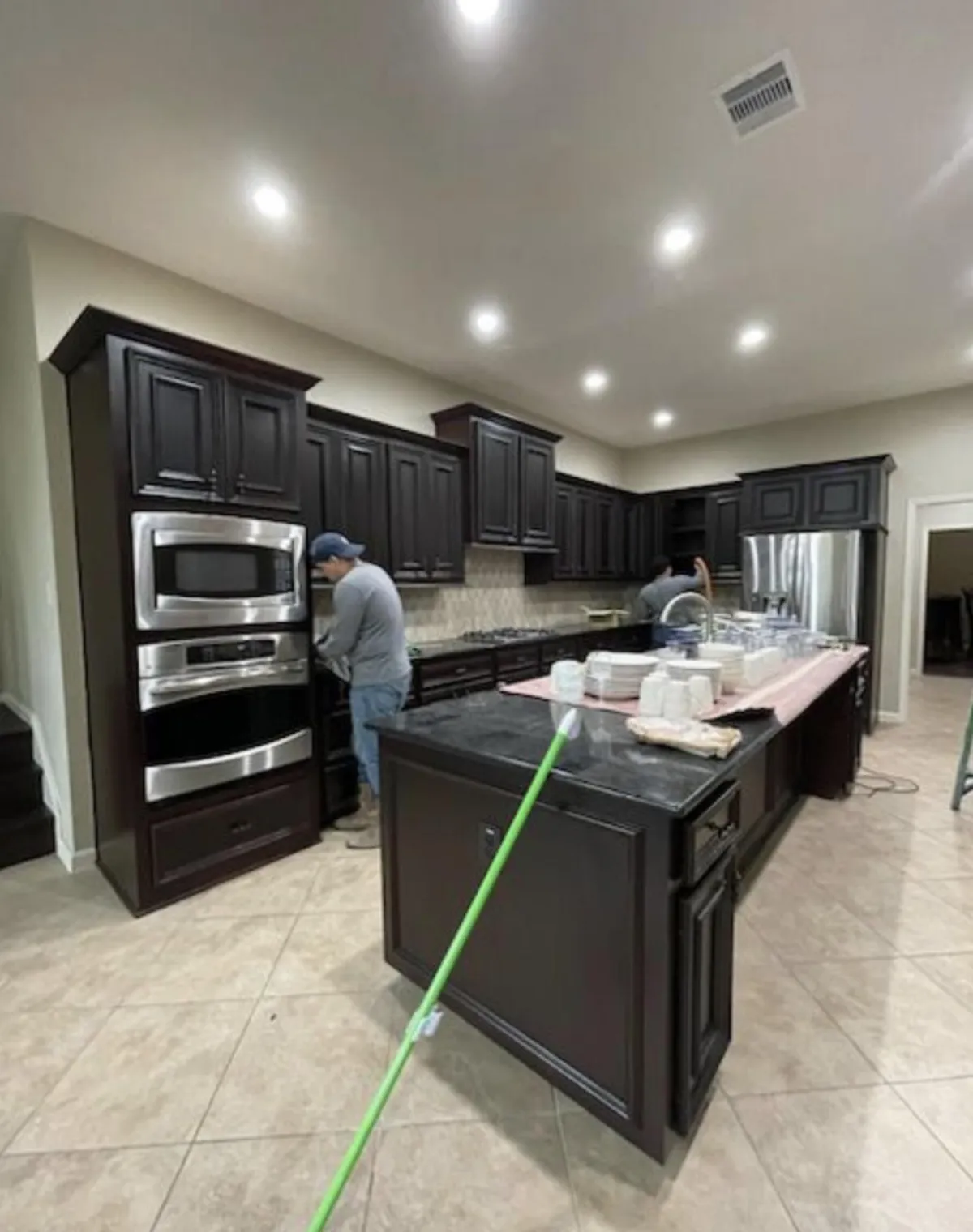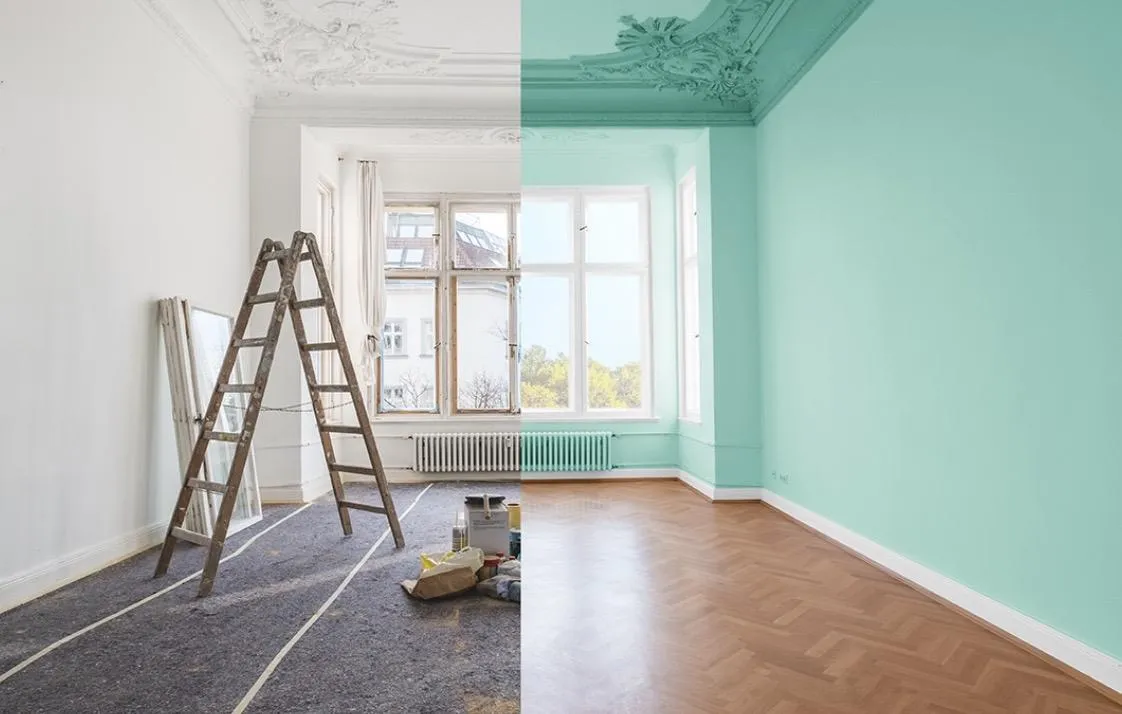Blog > Article Library
Twain Services Articles

What makes a kitchen renovation expensive?
Introduction:
Embarking on a kitchen renovation is an exciting venture, but understanding the factors that contribute to costs is crucial for effective planning. The often-cited phrase, "you get what you pay for," holds true in the realm of kitchen remodeling. In this comprehensive guide, we dissect the elements that make a kitchen renovation expensive, with a particular focus on the undeniable heavyweight: cabinets.
The Cost Landscape:
Cabinet Conundrum: The Dominant Expense (29%):
Quality and Customization: Cabinets are more than storage; they define the aesthetics and functionality of your kitchen. Opting for high-quality materials, intricate designs, or custom finishes significantly impacts the cost.
Material Choices: Premium materials, such as hardwoods or exotic veneers, drive up costs. Additionally, custom-built cabinets tailored to specific dimensions contribute to the overall expense.
Labor: The Skill Behind the Craft (22%):
Skilled Craftsmanship: Installing cabinets, countertops, and other components demands skilled labor. Craftsmen with expertise in precision measurements and installations ensure a flawless finish but come at a premium.
Demolition and Reconstruction: The labor involved in demolishing existing structures and reconstructing new ones is a substantial part of the overall cost.
Appliances: Marrying Functionality and Style (14%):
High-End Appliances: The allure of a modern kitchen often includes state-of-the-art appliances. Investing in high-end, energy-efficient models or those with advanced features contributes to the overall expense.
Installation and Integration: Professional installation and seamless integration of appliances add to the cost. Customizing spaces to fit specific appliances requires additional labor and expertise.
Countertops: The Surface Matters (10%):
Premium Materials: Opting for luxurious countertop materials, such as granite, marble, or quartz, can substantially increase costs.
Complex Designs: Elaborate countertop designs or layouts that involve intricate cuts, seams, or edge profiles contribute to the overall expense.
Other Contributing Factors (25%):
Flooring and Lighting: Quality flooring materials and stylish lighting fixtures enhance the overall ambiance but come with their own price tags.
Plumbing and Electrical Work: Upgrading plumbing or electrical systems to accommodate new layouts, fixtures, or appliances adds to the expense.
Permitting and Regulations: Navigating local permitting requirements and ensuring compliance with building codes incurs costs.
Cabinet Chronicles:
Material Choices Impact Costs:
Hardwood vs. MDF: Opting for hardwood cabinets over Medium-Density Fiberboard (MDF) or particleboard significantly increases costs due to the material's durability and aesthetic appeal.
Exotic Veneers: Choosing exotic veneers or rare woods elevates the cost, reflecting the exclusivity and rarity of the materials.
Customization: Tailored to Perfection:
Bespoke Dimensions: Custom-built cabinets, designed to fit specific spaces and accommodate unique storage needs, contribute to a higher price tag.
Intricate Designs: Elaborate designs, intricate detailing, or specialized finishes demand skilled craftsmanship and drive up costs.
Quality Craftsmanship:
Precision Installation: A flawless finish requires precise measurements and skilled installation. Experienced craftsmen ensure that cabinets are not only aesthetically pleasing but also functional.
Strategies for Cost Management:
Budgeting Wisely:
Prioritize Spending: Allocate the budget based on priorities. If cabinets are a non-negotiable element, consider cost-effective alternatives for other components.
Exploring Material Alternatives:
Quality at a Lower Cost: While solid hardwoods are premium, there are high-quality alternatives like hardwood veneers or durable laminates that offer a balance between aesthetics and cost.
Balancing Customization:
Strategic Customization: Choose areas for customization wisely. Focus on aspects that significantly impact aesthetics or functionality while being mindful of the overall budget.
Comparing Appliance Costs:
Functionality vs. Features: Evaluate whether the additional features of high-end appliances align with your needs. Sometimes, mid-range appliances offer optimal functionality at a lower cost.
Smart Countertop Choices:
Aesthetic and Practicality: Explore materials that balance aesthetics with practicality. Engineered quartz, for example, provides durability and a luxurious appearance at a relatively lower cost than natural stones.
Twain Services: Striking the Right Balance:
At Twain Services, we understand the delicate balance between creating a dream kitchen and managing costs effectively. Our approach involves meticulous planning, transparent communication, and a commitment to delivering exceptional craftsmanship within the specified budget. By understanding the nuances of each expense category, we guide our clients in making informed decisions, ensuring that their investment yields a kitchen that not only meets but exceeds their expectations.
Older Articles


Contact Us
Service Hours
Social Media
Blog > Article Library


What makes a kitchen renovation expensive?
Introduction:
Embarking on a kitchen renovation is an exciting venture, but understanding the factors that contribute to costs is crucial for effective planning. The often-cited phrase, "you get what you pay for," holds true in the realm of kitchen remodeling. In this comprehensive guide, we dissect the elements that make a kitchen renovation expensive, with a particular focus on the undeniable heavyweight: cabinets.
The Cost Landscape:
Cabinet Conundrum: The Dominant Expense (29%):
Quality and Customization: Cabinets are more than storage; they define the aesthetics and functionality of your kitchen. Opting for high-quality materials, intricate designs, or custom finishes significantly impacts the cost.
Material Choices: Premium materials, such as hardwoods or exotic veneers, drive up costs. Additionally, custom-built cabinets tailored to specific dimensions contribute to the overall expense.
Labor: The Skill Behind the Craft (22%):
Skilled Craftsmanship: Installing cabinets, countertops, and other components demands skilled labor. Craftsmen with expertise in precision measurements and installations ensure a flawless finish but come at a premium.
Demolition and Reconstruction: The labor involved in demolishing existing structures and reconstructing new ones is a substantial part of the overall cost.
Appliances: Marrying Functionality and Style (14%):
High-End Appliances: The allure of a modern kitchen often includes state-of-the-art appliances. Investing in high-end, energy-efficient models or those with advanced features contributes to the overall expense.
Installation and Integration: Professional installation and seamless integration of appliances add to the cost. Customizing spaces to fit specific appliances requires additional labor and expertise.
Countertops: The Surface Matters (10%):
Premium Materials: Opting for luxurious countertop materials, such as granite, marble, or quartz, can substantially increase costs.
Complex Designs: Elaborate countertop designs or layouts that involve intricate cuts, seams, or edge profiles contribute to the overall expense.
Other Contributing Factors (25%):
Flooring and Lighting: Quality flooring materials and stylish lighting fixtures enhance the overall ambiance but come with their own price tags.
Plumbing and Electrical Work: Upgrading plumbing or electrical systems to accommodate new layouts, fixtures, or appliances adds to the expense.
Permitting and Regulations: Navigating local permitting requirements and ensuring compliance with building codes incurs costs.
Cabinet Chronicles:
Material Choices Impact Costs:
Hardwood vs. MDF: Opting for hardwood cabinets over Medium-Density Fiberboard (MDF) or particleboard significantly increases costs due to the material's durability and aesthetic appeal.
Exotic Veneers: Choosing exotic veneers or rare woods elevates the cost, reflecting the exclusivity and rarity of the materials.
Customization: Tailored to Perfection:
Bespoke Dimensions: Custom-built cabinets, designed to fit specific spaces and accommodate unique storage needs, contribute to a higher price tag.
Intricate Designs: Elaborate designs, intricate detailing, or specialized finishes demand skilled craftsmanship and drive up costs.
Quality Craftsmanship:
Precision Installation: A flawless finish requires precise measurements and skilled installation. Experienced craftsmen ensure that cabinets are not only aesthetically pleasing but also functional.
Strategies for Cost Management:
Budgeting Wisely:
Prioritize Spending: Allocate the budget based on priorities. If cabinets are a non-negotiable element, consider cost-effective alternatives for other components.
Exploring Material Alternatives:
Quality at a Lower Cost: While solid hardwoods are premium, there are high-quality alternatives like hardwood veneers or durable laminates that offer a balance between aesthetics and cost.
Balancing Customization:
Strategic Customization: Choose areas for customization wisely. Focus on aspects that significantly impact aesthetics or functionality while being mindful of the overall budget.
Comparing Appliance Costs:
Functionality vs. Features: Evaluate whether the additional features of high-end appliances align with your needs. Sometimes, mid-range appliances offer optimal functionality at a lower cost.
Smart Countertop Choices:
Aesthetic and Practicality: Explore materials that balance aesthetics with practicality. Engineered quartz, for example, provides durability and a luxurious appearance at a relatively lower cost than natural stones.
Twain Services: Striking the Right Balance:
At Twain Services, we understand the delicate balance between creating a dream kitchen and managing costs effectively. Our approach involves meticulous planning, transparent communication, and a commitment to delivering exceptional craftsmanship within the specified budget. By understanding the nuances of each expense category, we guide our clients in making informed decisions, ensuring that their investment yields a kitchen that not only meets but exceeds their expectations.
Older Articles


Contact Us
(346) 209-4009
Humble, Texas, 77346
Service Hours
Mon-Sat: 8am-6pm
Sun: Off
Social Media





